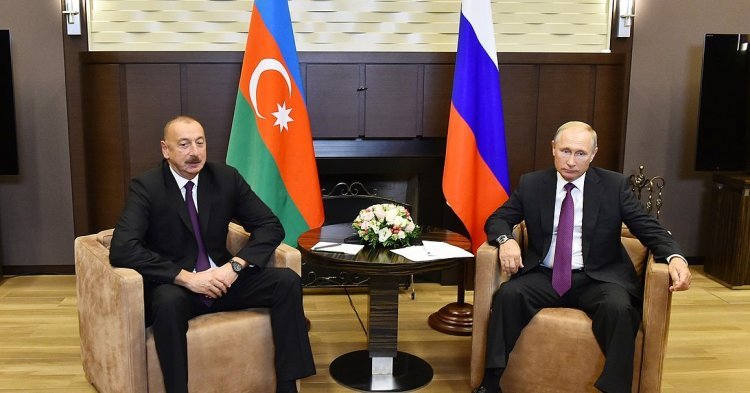Azerbaijan and Belarus are two very different countries, in terms of culture, language, history and economy. However, two main features enable us to compare them : firstly, their political regimes are both considered as “authoritarian” and “dictatorial” (Belarus is often called the “last dictatorship in Europe”), and secondly, neither of them wishes to join the EU, making them an exception among EaP countries.
As early as the mid-1990s, the EU started building links with Belarus and Azerbaijan. A first agreement was negotiated and signed with Minsk in 1995, but never entered into force because the relations between the two deteriorated following the election of Alexander Lukashenko in 1994. Furthermore, the European Union excluded Belarus from its European Neighbourhood Policy (ENP) in 2004, which was originally designed to establish a “ring of friends” in the Union’s geographical proximity, and a sanitary cordon between the EU and Russia. Until now, Belarus has been very close to Russia, being a member of the Eurasian Economic Union and sharing a customs union with Moscow.
On the other hand EU-Azerbaijan formal relations began in 1996 when a Partnership and Cooperation Agreement (PCA) was signed. This agreement entered into force in 1999 and marked the beginning of a mainly positive relationship between Baku and Brussels. The country was even included in the EU’s ENP at the beginning of the 2000s.
Nevertheless, both countries joined the Eastern Partnership in 2009, and have taken part in many of the initiatives since then (although Belarus has only a limited access to some EaP bodies).
Collaboration within the Eastern Partnership : Belarus as a pariah state
As the multilateral framework in the EU’s neighborhood policy, the EaP offers a place to Belarus and Azerbaijan. Despite their authoritarian inclinations, both countries have seized the chance to cooperate with the EU, as they consider it to be a lucrative opportunity. Brussels’ assistance to Belarus mainly takes the form of regional and multi-country ’Action Programmes’ funded every year under the European Neighborhood Instrument (ENI). According to the European External Action Service (EEAS), EU assistance to Belarus doubled to around €30 million annually between 2016 and 2020. The EEAS also adds that Belarus has been participating ’actively’ in the multilateral formats of the EaP, such as its Programmes of Cross-Border Cooperation (Poland-Belarus-Ukraine, Latvia, Lithuania, Belarus).
Despite its authoritarian nature, Azerbaijan should not be considered as a pariah state in the EaP. The EU is the main trading partner in the country, making up more than 40% of Baku’s total external trade in 2018. Several joint projects have also been completed in the last ten years. Yet the EU’s main interest in Azerbaijan is its energy : indeed, the country has large oil and natural gas resources and is strategically situated on the gas roads from Central Asia to Europe, essential in order to diversify energy supply and become less dependent on Russian natural resources. This strategic importance may be a reason why the EU pays much less attention to the democratic situation in the country than with Belarus.
Conversely, Belarus occupies a unique position, mainly because its members of the Parliament are not allowed to take part in the work of the Euronest Parliamentary Assembly, the specific legislative body of the framework. Indeed, article 3 of Euronest’s Constitutive Act specifies that to take part in the work of the Assembly, a national Parliament shall (among other things) “have been elected according to OSCE commitments, and other international standards for democratic elections ; and commit itself to protecting and promoting human rights and fundamental freedoms, pluralistic democracy and the rule of law”. According to the European Parliament, Belarus does not fulfil these criteria, even though ten seats are reserved for the MPs of the country for when it fulfils the requirements. Despite its repeated assaults on human rights, Azerbaijani MPs have been seating in the Euronest since 2011.
Concerning the fight against coronavirus, Belarus and Azerbaijan have also benefited from EU’s aid : they have gotten 60 million and 14 million euros, respectively.
Paving the way for bilateral talks with the EU
Despite this willingness to build an independent foreign policy, both countries are currently negotiating with the EU to sign specific agreements.
Despite its very bad record concerning human rights and democracy, Lukashenko’s Belarus is trying to build solid relations with the EU. The “Visa Facilitation and Readmission Agreements” were signed in January 2020 and are expected to enter into force in the summer of 2020. The EU-Belarus Partnership Priorities are currently being negotiated and will include four domains of cooperation : economy, governance, climate action, and circulation of people. As regards trade, Brussels continues to support Belarus’ World Trade Organisation accession process. However, the Bloc repeatedly states that significant improvements in Belarus’s human rights situation is necessary before any further collaboration can take place.
As mentioned above, the EU’s relations with Azerbaijan are based on the EU-Azerbaijan Partnership and Cooperation Agreement in force since 1999. In February 2017, Brussels and Baku began negotiations on a new framework agreement designed to enhance bilateral cooperation. Here again, energy supply plays a pivotal role in the EU’s interest in the country. The following year, the EU and Azerbaijan endorsed Partnership Priorities, linked to the four Eastern Partnership priorities set up in the “20 Deliverables for 2020” roadmap.
The main challenge in the EU’s bilateral relations with both countries is once again the role of Russia. If Belarus has a very tight yet suspicious relations with Moscow, seeking to find a balance between the two powerful partners, Azerbaijan seeks to have an independent foreign policy. However, Russia is also trying to build more contacts with the South-Caucasus country, as part of its influence strategy in the region. If Baku is still not a member of the Eurasian Union, the EU will have to strengthen its relations with the country, especially to diversify its energy supply.
Ten years after the creation of the Eastern Partnership, the situation in the EU’s eastern neighbourhood is mixed. The multilateral framework has led to some improvements on political, economic, social and environmental points of view. However, different dynamics in bilateral cooperations can be seen. The European Union must therefore satisfy the different countries’ expectations, even if it does not lead to accession talks. A more solid multilateral framework with more funds and better conditionality concerning democratic governance and sustainable development could be necessary. Importantly, however, the whole region’s stability will remain in question because of the antagonism between the EU and Russia.


Suivre les commentaires : |
|
